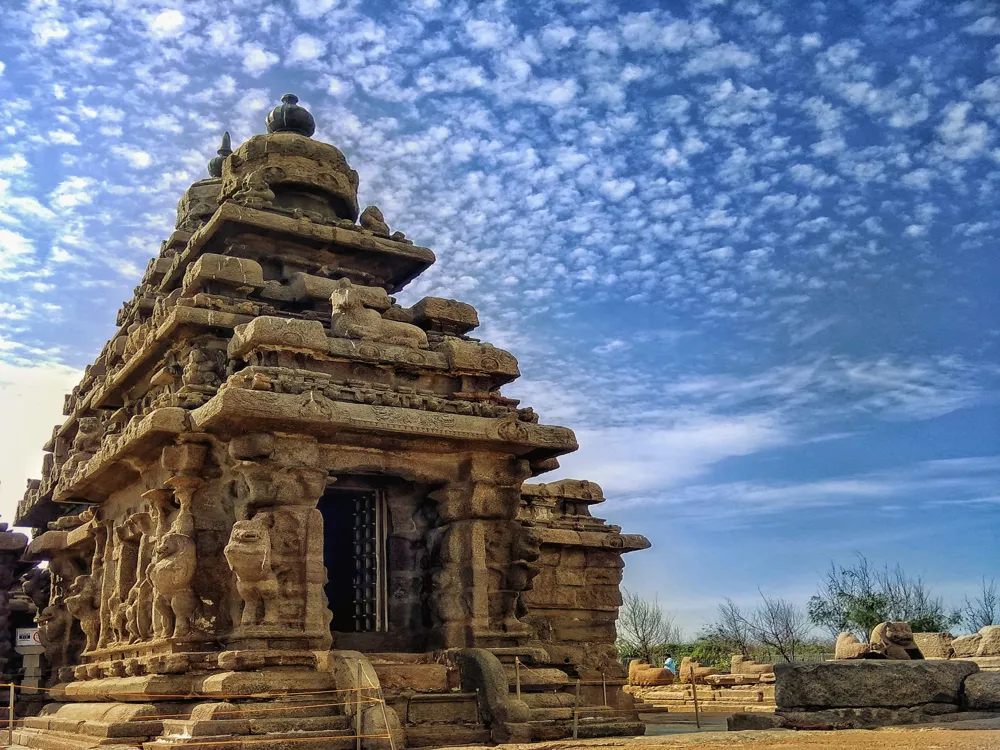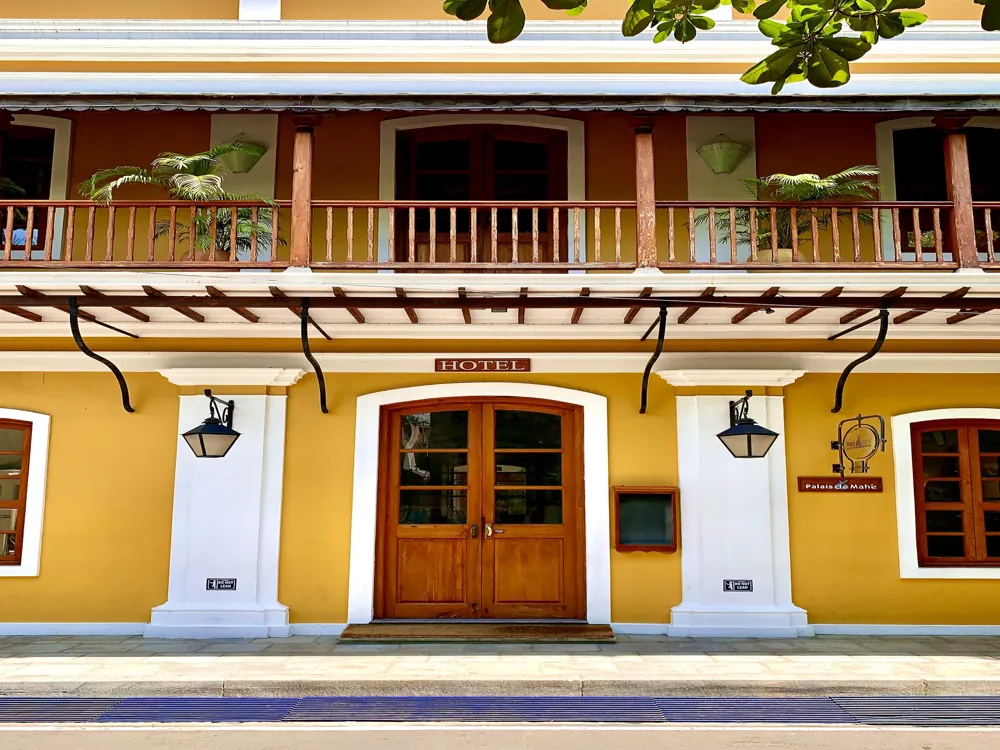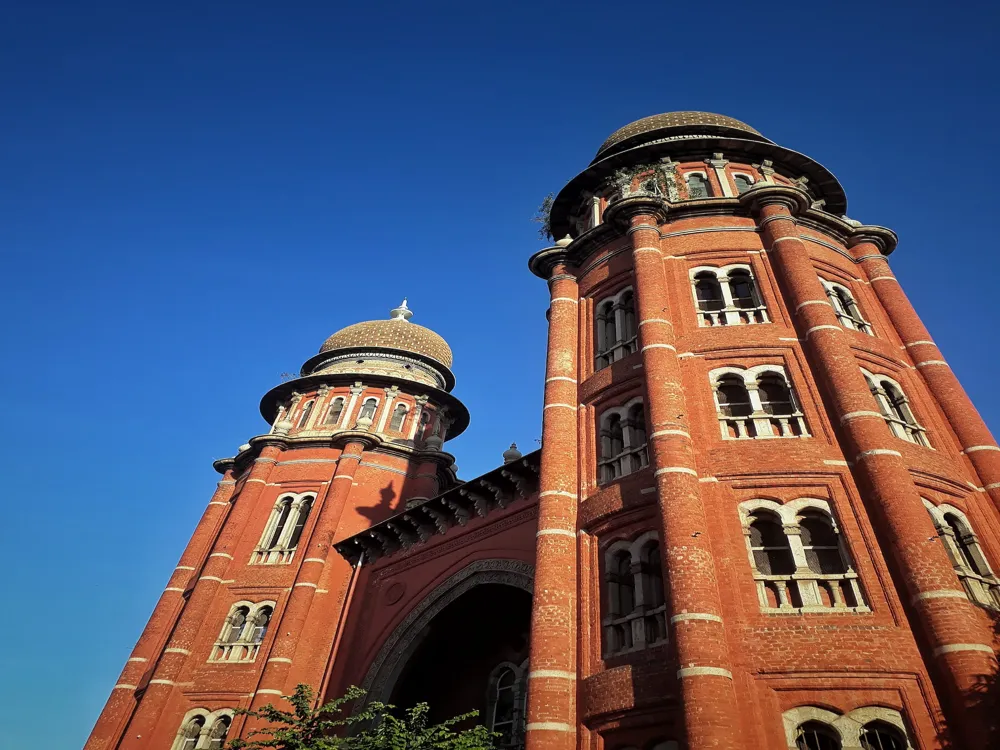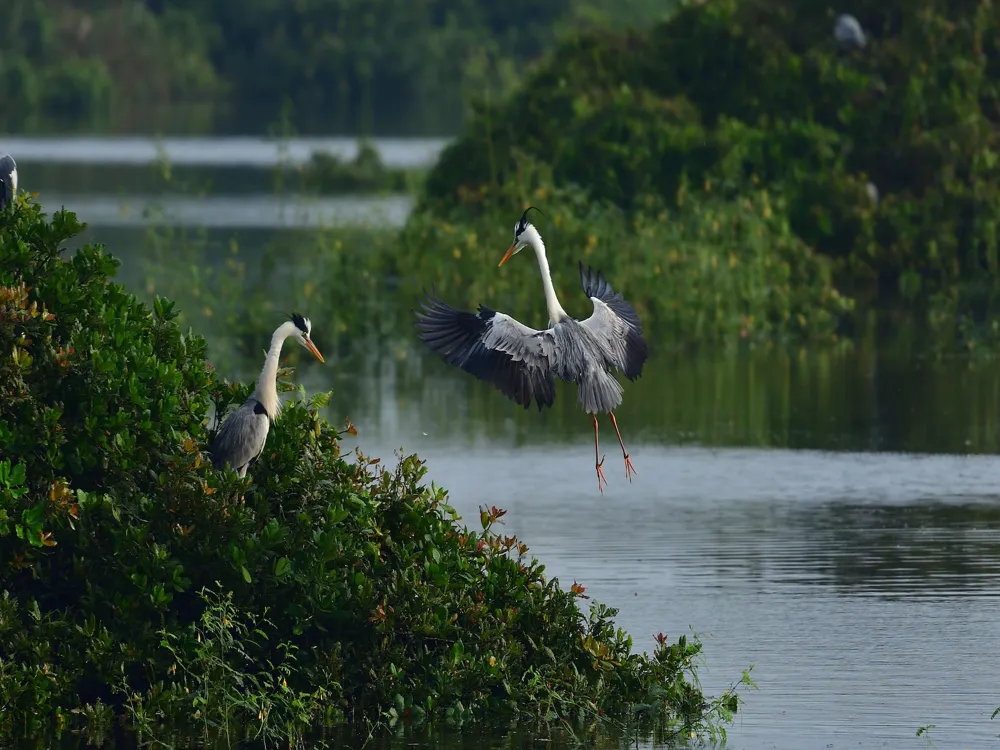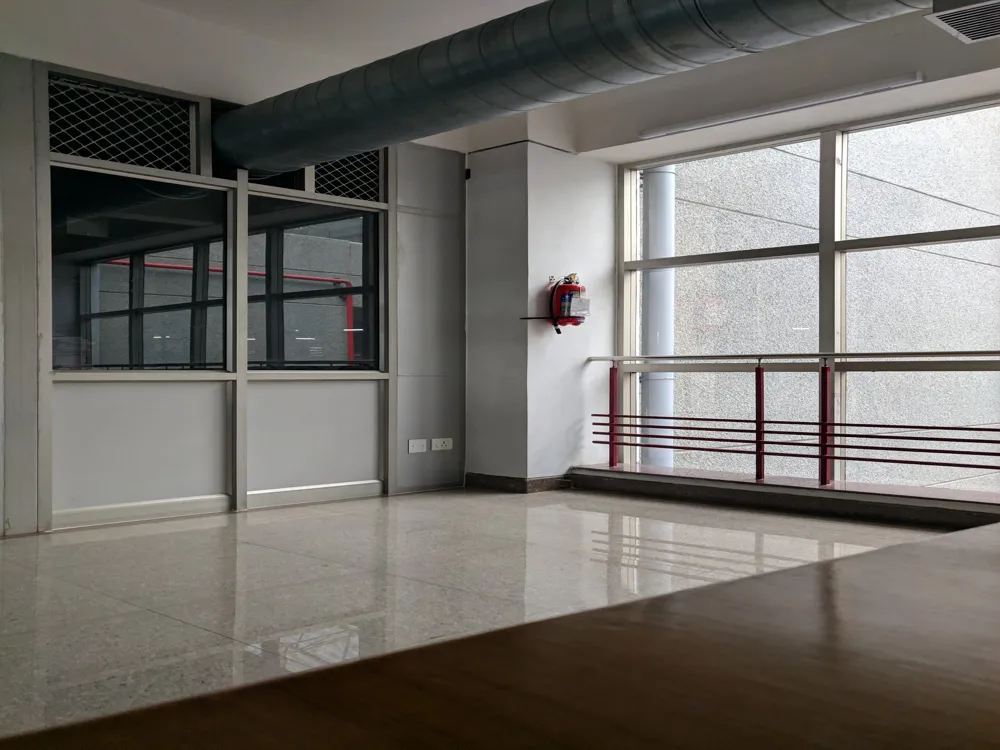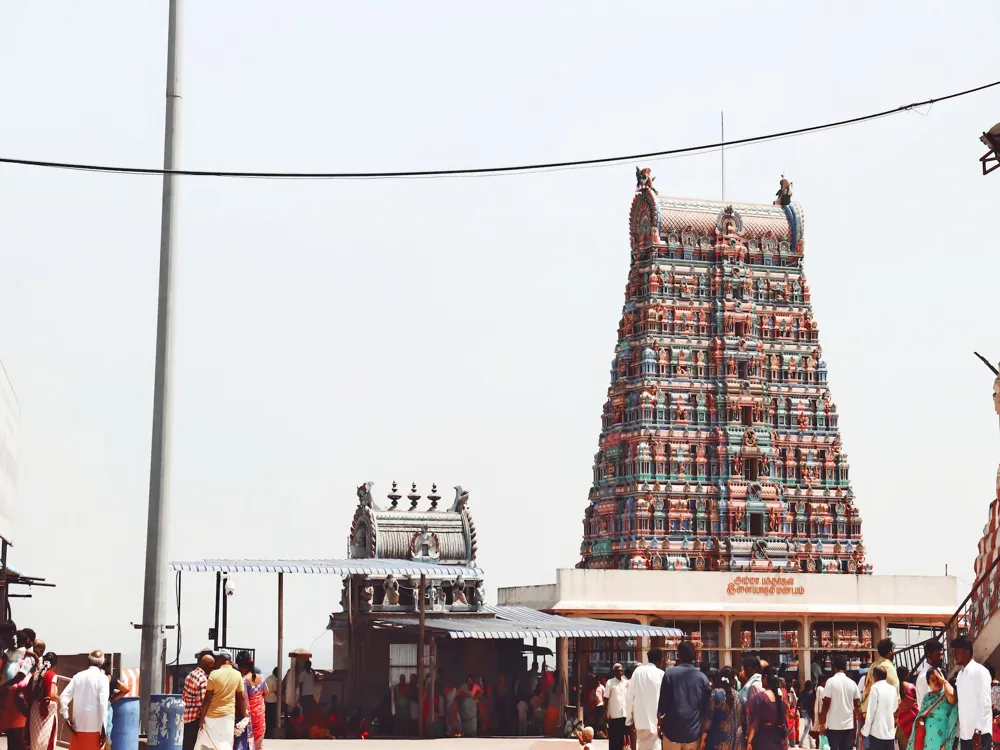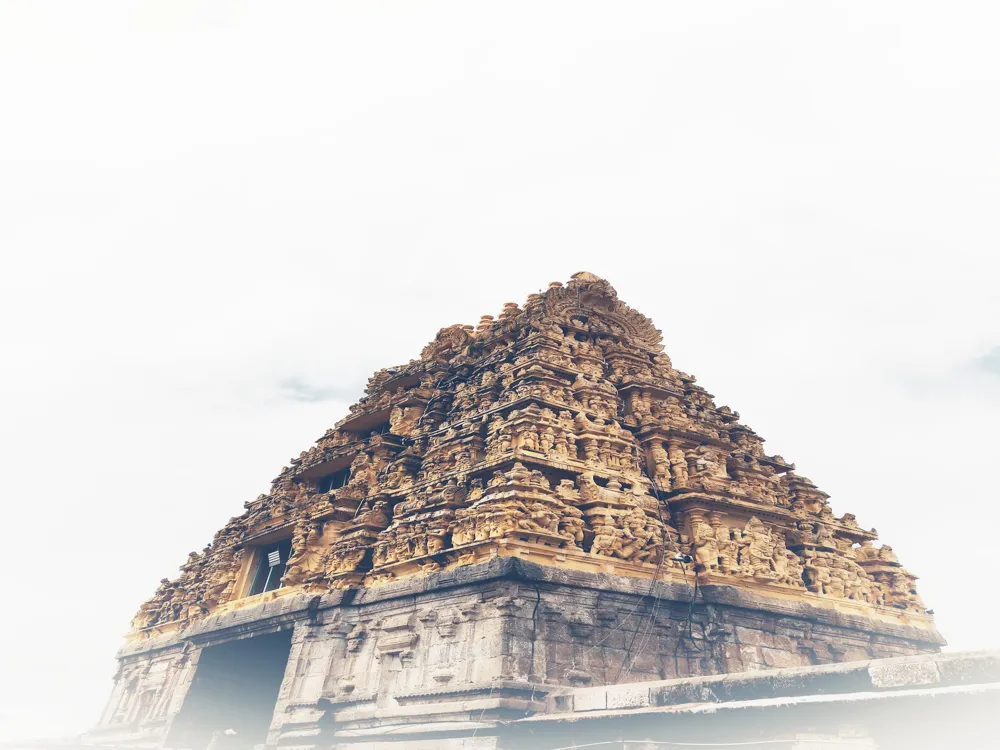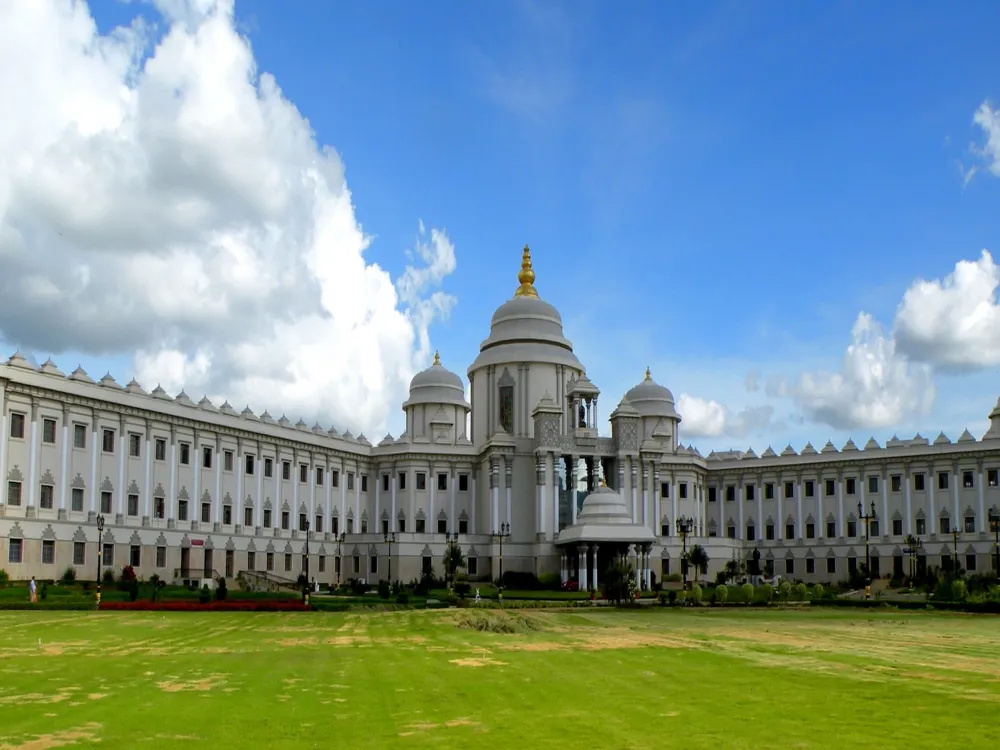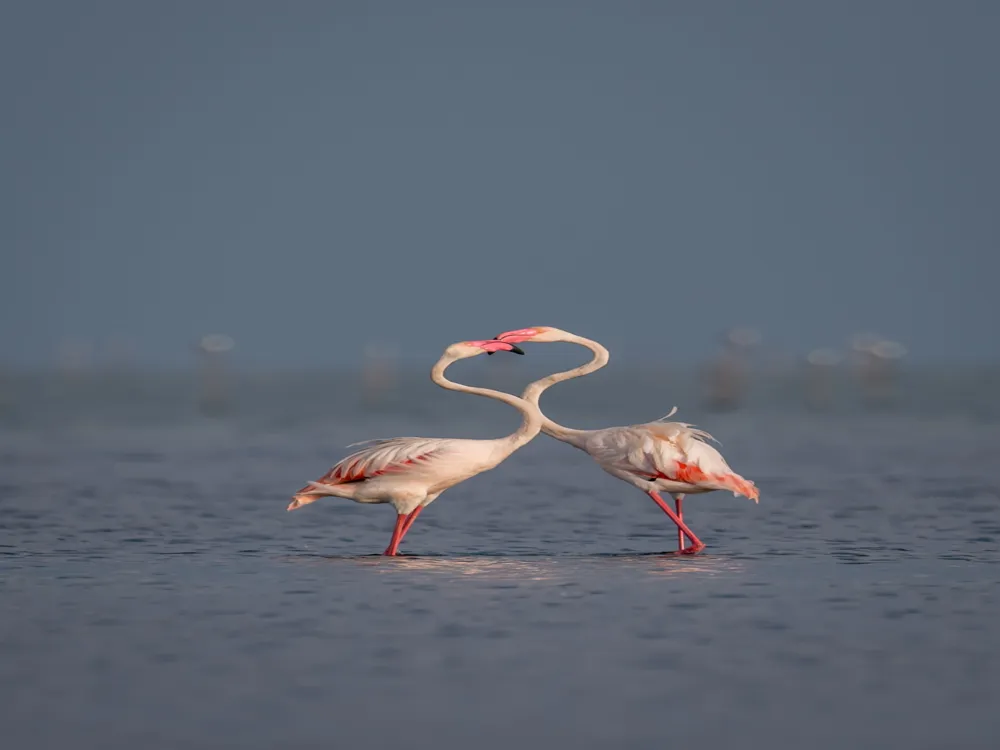The Trimurti Cave, nestled in the historic town of Mahabalipuram in Tamil Nadu, India, is an exquisite example of ancient Indian rock-cut architecture. This fascinating cave temple, dating back to the 7th century, is part of the UNESCO World Heritage Site known as the Group of Monuments at Mahabalipuram. The name 'Trimurti' signifies the trio of major Hindu gods – Brahma, Vishnu, and Shiva, and the cave is dedicated to these deities, embodying a deep spiritual and religious significance. The architecture of the Trimurti Cave is a testament to the Pallava Dynasty's artistic and architectural prowess. Carved out of a single large boulder, the cave features intricate carvings and sculptures that showcase the skill and creativity of ancient Indian artisans. The rock-cut architecture of this era is known for its simplicity and elegance, with a focus on creating spaces for worship that are in harmony with the natural surroundings. As visitors approach the cave, they are greeted by a façade adorned with beautifully carved pillars and pilasters, leading to three separate sanctums. Each sanctum houses a shrine dedicated to one of the Trimurti gods. The central shrine, slightly larger than the others, is dedicated to Lord Shiva, the destroyer and transformer within the Hindu trinity. To its right is the shrine for Lord Vishnu, the preserver, and to the left, the shrine for Lord Brahma, the creator. The sculptures within the Trimurti Cave are remarkable for their detailing and expressiveness. The depiction of the gods is done in a way that captures their divine attributes, with each figure exuding a sense of power and serenity. The walls and pillars of the cave are also adorned with scenes from Hindu mythology, providing insights into the religious and cultural life of the period. The Trimurti Cave is not just a religious site but also a significant historical and cultural landmark. It offers a window into the past, allowing visitors to experience the artistic and spiritual heritage of ancient India. The cave's location in Mahabalipuram, amidst other architectural marvels like the Shore Temple and the Pancha Rathas, makes it a key part of the region's rich tapestry of monuments. The architecture of the Trimurti Cave in Mahabalipuram is a fascinating blend of religious symbolism, artistic creativity, and technical expertise. As a prime example of Pallava rock-cut architecture, it reflects the innovative spirit and skill of the artisans of the time. The cave temple was carved out of a single large boulder, a technique that was revolutionary in the 7th century. This method of construction not only displays the technical abilities of the Pallavas but also their understanding of the material and its possibilities. The Trimurti Cave comprises three separate sanctums, each dedicated to a deity of the Hindu trinity. The layout of the cave is straightforward yet elegant, with each sanctum connected through a common mandapa (hall). The mandapa, supported by ornate pillars, serves as the gathering and worship space. The pillars are a highlight of Pallava architecture, known for their unique design – a combination of square and cylindrical shapes, topped with lotus-shaped capitals. The façade of the Trimurti Cave is as impressive as its interior. The frontage is adorned with intricately carved pilasters and guardians (dwarapalas) that stand as protectors of the divine. The carvings on the façade are not just decorative elements but also serve a symbolic purpose, illustrating various aspects of Hindu mythology and the gods’ attributes. The shrines inside the cave are modest in size but rich in detail. The central shrine, dedicated to Lord Shiva, features a lingam – a symbol of the deity. The Vishnu and Brahma shrines, on either side, contain carvings of these gods in various poses, each telling a story from the Hindu pantheon. The walls and ceiling of the cave are adorned with reliefs and murals, depicting scenes from sacred texts, adding to the spiritual ambiance of the space. The Trimurti Cave's architecture is not just about religious devotion; it's a reflection of the socio-cultural milieu of the time. The carvings and sculptures provide insights into the clothing, hairstyles, and lifestyle of the period. The cave, therefore, serves as an important historical document, preserving the essence of 7th-century Indian society. The ideal time to visit the Trimurti Cave is between November and February when the weather in Tamil Nadu is pleasant and conducive for exploring. Summers can be quite hot, making it challenging to spend a lot of time outdoors. As a place of historical and religious importance, it's recommended to dress modestly when visiting the Trimurti Cave. Comfortable clothing suitable for walking and exploring is advisable. While photography is allowed, it's important to be respectful of the site's cultural significance. Using a camera without flash is recommended to preserve the ancient carvings and murals. Consider hiring a local guide for a more insightful experience. Guides can provide detailed explanations of the cave’s history, architecture, and the mythology associated with the deities. Carry water with you, especially during the warmer months. Staying hydrated is important while exploring the outdoor areas of Mahabalipuram. Mahabalipuram is well-connected by road to major cities like Chennai, which is about 60 km away. Visitors can reach the Trimurti Cave by: Read More:Overview of Trimurti Cave, Mahabalipuram
Architecture of Trimurti Cave
Tips When Visiting Trimurti Cave
Best Time to Visit
Dress Appropriately
Photography Tips
Hiring a Guide
Stay Hydrated
How To Reach Trimurti Cave
Trimurti Cave
Mahabalipuram
Tamil Nadu
NaN onwards
View mahabalipuram Packages
Mahabalipuram Travel Packages
View All Packages For Mahabalipuram
Top Hotel Collections for Mahabalipuram

Private Pool

Luxury Hotels

5-Star Hotels

Pet Friendly
Top Hotels Near Mahabalipuram
Other Top Ranking Places In Mahabalipuram
View All Places To Visit In mahabalipuram
View mahabalipuram Packages
Mahabalipuram Travel Packages
View All Packages For Mahabalipuram
Top Hotel Collections for Mahabalipuram

Private Pool

Luxury Hotels

5-Star Hotels

Pet Friendly







